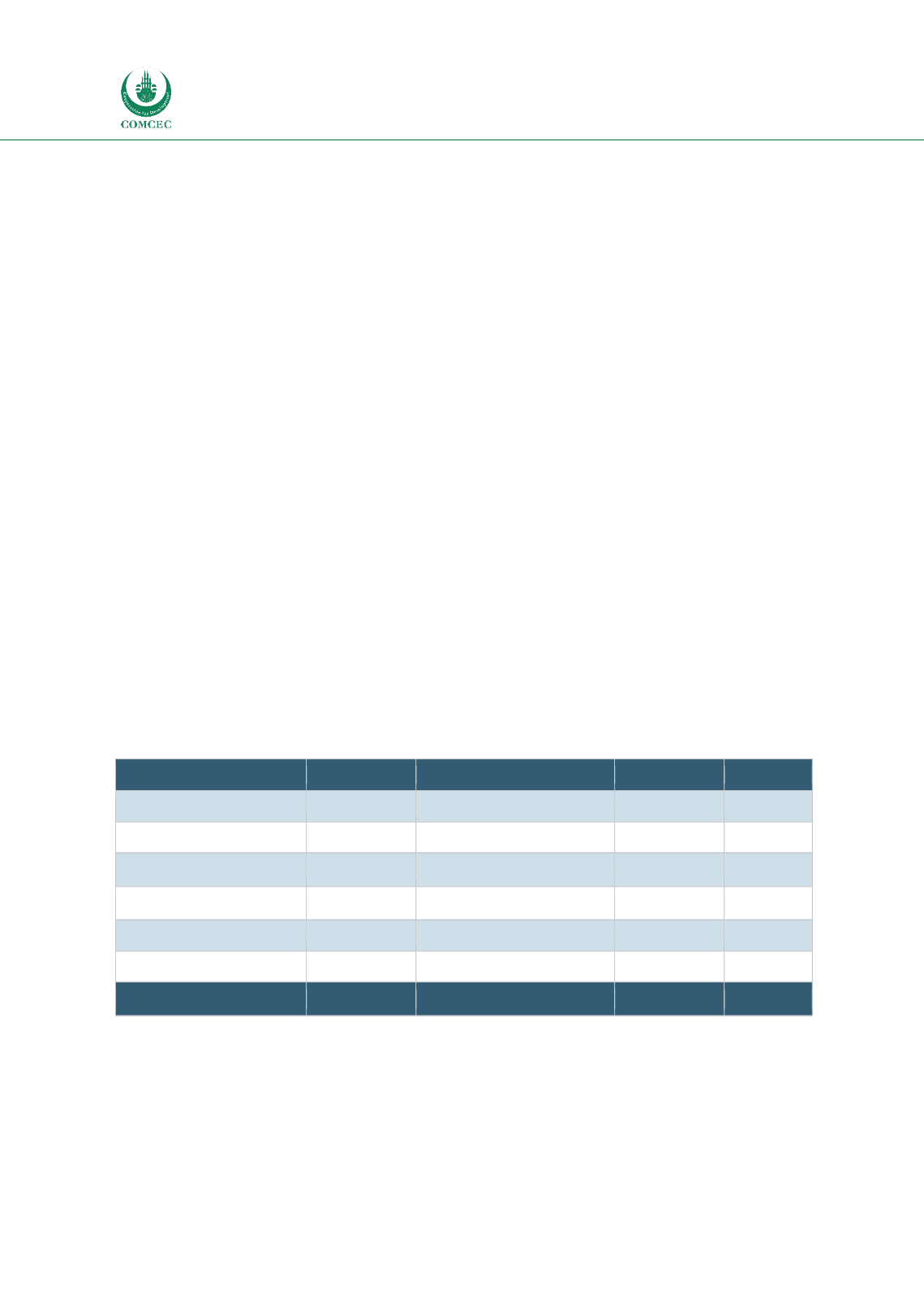

Reducing On-Farm Food Losses
In the OIC Member Countries
86
2013. Almost 40% of this comes from aquaculture. In 2010 there were 1,447,418 households,
firms and companies involved in the industry (BKPM 2011). Pond culture, marine culture and
embankment aquaculture are all on the rise in Indonesia as well as in Asia and the world as a
whole. World food fish aquaculture production more than doubled from 32.4 million tonnes in
2000 to 66.6 million tonnes in 2012 (FAO 2014), with Asia accounting for about 88 % of world
aquaculture production by volume.
Aquaculture requires fewer feedstuffs to farm fish and seafood than beef and pigs. For example,
it takes 15 times as much feed to produce 1 kilogram of beef as to produce 1 kilogram of carp.
Aquaculture is thus a resource-efficient method per se of producing protein-rich food from
animals (WOR 2012). Driven mainly by massive population growth, urbanization and increasing
wealth in Asia, aquaculture has grown by about 8 percent per annum over the past 20 years,
which is a faster growth rate than any other food sector. Aquaculture production in Indonesia
totaled approximately 3.8 million tonnes in 2013 (FAO Fish Stat 2013).
The Indonesian shrimp sub-sector is relatively mature and professionally organized. While
there are still companies that need to find their way to the high-end international markets, most
large and medium-sized companies have well established links with the EU, the US and Japanese
markets. The only two important species for exports are Pacific White and Black Tiger shrimp
where production is concentrated on the island of Sumatra (including Lampung). Sumatra
accounts for 42% of the total shrimp production, of which 64% of the total production volume
is Pacific White shrimp. According to market value, shrimp is by far the most important export
product reaching $1b in 2009. The most important market for Indonesian shrimp is the US with
exports consisting mainly of Pacific White shrimp.
Table 3.18: Production of Black Tiger and Pacific White Shrimp per Island in 2010
(in tonnes)
Pacific White Shrimp
Share
Black Tiger Shrimp
Share
Total
86,428
62%
53,027
38%
13,9455
12,445
42%
17,860
58%
30,305
59,946
69%
26,684
31%
86,630
9,018
37%
15,168
63%
24,186
2,530
100%
2,530
32,627
100%
32,627
201,994
64%
112,739
32%
314,733
Source: MMAF (2011)
The production volume of pangasius and tilapia has increased significantly, with production of
both species tripling between 2007 and 2010. The most important production regions for both
species are in Sumatra, Java and Kalimantan. Most pangasius (nearly 100%) and tilapia (about
80%) are produced for domestic consumption.
















